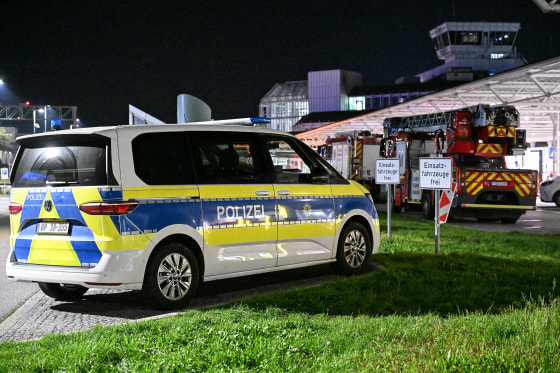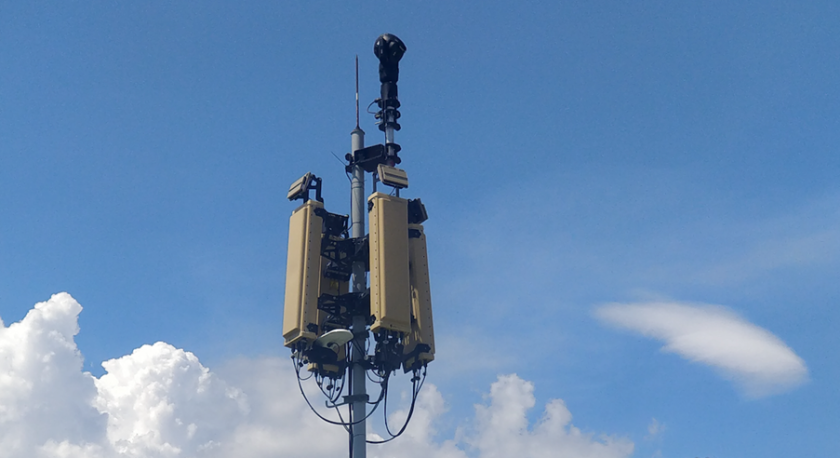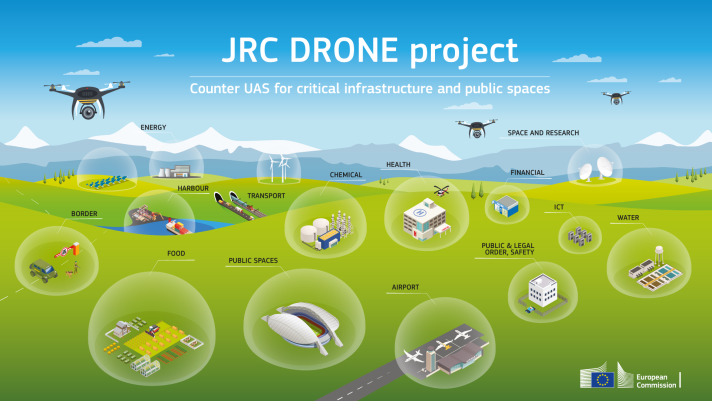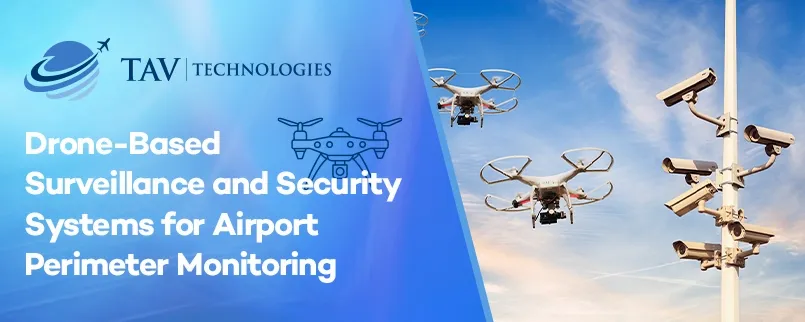The recent drone incident at Munich airport has raised significant concerns about air traffic safety and security. On a day in late summer, a drone was spotted flying near the airport, prompting authorities to take immediate action. The incident resulted in the suspension of all flight operations for several hours, affecting thousands of passengers.
The impact on flights was substantial, with numerous takeoffs and landings delayed or canceled. Many passengers were left stranded, unsure of when they would be able to continue their journeys. The airport's authorities worked closely with air traffic control and law enforcement agencies to resolve the situation as quickly as possible.
The reasons behind the drone incident are still under investigation. However, it is clear that the presence of drones near airports poses a significant threat to air traffic safety. Some of the key concerns include:
- Collision risk: Drones can collide with aircraft, causing significant damage or even loss of life.
- Disruption of air traffic: Drones can disrupt air traffic control systems, leading to delays and cancellations.
- Security risks: Drones can be used for malicious purposes, such as surveillance or smuggling.
The incident at Munich airport highlights the need for stricter regulations and enforcement mechanisms to prevent such incidents in the future. Airport authorities and law enforcement agencies must work together to develop and implement effective strategies for detecting and mitigating drone-related threats. This may include the use of drone detection technology, increased surveillance, and public awareness campaigns to educate people about the risks associated with drones near airports.

Incident Overview
The circumstances surrounding the drone sighting were unusual and caused significant concern among airport authorities. The incident occurred on a clear evening, with multiple witnesses reporting a small, unmanned aerial vehicle (UAV) flying in restricted airspace near the airport. The drone was seen hovering above the airfield, prompting an immediate response from airport officials.
The drone sighting was first reported by air traffic control, who noticed the UAV on radar. This initial report was quickly followed by visual sightings from airport staff and passengers. The drone was described as small, approximately two feet in length, and equipped with flashing lights. The circumstances surrounding the sighting were thoroughly investigated, with authorities reviewing security footage and interviewing witnesses.
The immediate actions taken by airport authorities were swift and decisive. Upon receiving the initial report, airport officials sprang into action, implementing emergency protocols to ensure the safety of passengers and staff. The actions taken included:
- Notification of air traffic control and nearby airports
- Activation of the airport's emergency response plan
- Deployment of security personnel to the affected area
- Review of security footage to track the drone's movements
- Collaboration with local law enforcement to investigate the incident
Airport authorities also took steps to minimize disruptions to flights and airport operations. While the incident did cause some delays, the swift response from authorities helped to prevent any major disruptions. The incident highlighted the importance of vigilance and preparedness in responding to unexpected events, and airport authorities have since reviewed and refined their protocols to ensure they are better equipped to handle similar incidents in the future.

Flight Disruptions and Passenger Impact
The recent flight disruptions have caused significant inconvenience to thousands of passengers worldwide. According to reports, over 10,000 flights have been grounded, affecting major airlines such as American Airlines, Delta Air Lines, and United Airlines. The disruptions have been attributed to a combination of factors, including technical issues, bad weather, and air traffic control problems.
The airlines affected by the disruptions include:
- American Airlines, with over 2,000 flights cancelled
- Delta Air Lines, with over 1,500 flights cancelled
- United Airlines, with over 1,000 flights cancelled
- Other regional airlines, with several hundred flights cancelled
These cancellations have resulted in a significant impact on passengers, who have been left stranded at airports, unsure of when they will be able to reach their destinations.
The experience of stranded passengers has been particularly challenging, with many forced to wait for hours or even days for a new flight. Passengers have reported feeling frustrated, anxious, and disappointed, with some even missing important events or appointments due to the disruptions. Despite the challenges, many passengers have praised the support provided by airport staff, who have worked tirelessly to assist stranded passengers and provide them with food, water, and other essential supplies.
In terms of support, airports have provided a range of services to stranded passengers, including:
- Food and water vouchers
- Accommodation options, such as hotel rooms or lounge access
- Entertainment options, such as movies or games
- Customer service teams, to assist with rebooking flights or providing information
These services have helped to alleviate some of the stress and discomfort experienced by stranded passengers, and have demonstrated the commitment of airports to providing a positive passenger experience, even in difficult circumstances.

Safety and Security Measures
Airport safety is a top priority, and with the increasing use of drones, it's essential to have measures in place to detect and mitigate any potential threats. Drone detection systems are designed to identify and track drones in the vicinity of the airport, allowing authorities to take swift action in the event of a security breach. These systems use a combination of radar, acoustic sensors, and optical cameras to detect drones and determine their location, speed, and trajectory.
The role of law enforcement and regulatory bodies is crucial in responding to drone-related incidents at airports. They work closely with airport authorities to develop and implement effective response strategies. Some of the key responsibilities of law enforcement and regulatory bodies include:
- Investigating drone-related incidents and gathering evidence
- Enforcing laws and regulations related to drone usage
- Providing guidance and support to airport authorities on drone detection and mitigation
- Coordinating with other agencies to respond to drone-related incidents
In addition to these measures, airports also have protocols in place for responding to drone sightings. This includes alerting air traffic control, notifying law enforcement, and activating emergency response procedures. The goal is to minimize disruptions to airport operations while ensuring the safety of passengers, staff, and aircraft. Regulatory bodies also play a critical role in developing and enforcing laws and regulations related to drone usage, including restrictions on flying drones near airports.
Effective communication and collaboration between airport authorities, law enforcement, and regulatory bodies are essential for preventing and responding to drone-related incidents. By working together, they can share intelligence, best practices, and resources to stay ahead of potential threats and ensure the safety and security of airports. This includes participating in regular drills and exercises to test response procedures and identify areas for improvement.

Prevention and Future Preparations
Preventing drone incursions at airports is a complex task that requires a multi-faceted approach. One of the main challenges is the difficulty in detecting and tracking small, unmanned aerial vehicles (UAVs) in a crowded airspace. Airports are particularly vulnerable to drone incursions due to their proximity to urban areas and the presence of multiple runways and flight paths.
The risks associated with drone incursions at airports are significant, ranging from collisions with aircraft to disruption of air traffic control systems. To mitigate these risks, airports must invest in advanced surveillance and detection technologies. This can include the use of radar systems, acoustic sensors, and optical cameras to detect and track drones.
Some potential solutions to enhance airport security include:
- Implementing no-fly zones around airports and restricting drone flights in these areas
- Developing and deploying drone detection and tracking systems
- Establishing protocols for responding to drone incursions, including evacuation procedures and communication plans
- Collaborating with law enforcement agencies to investigate and prosecute drone-related incidents
Regulatory solutions can also play a crucial role in preventing drone incursions at airports. This can include the establishment of strict regulations and guidelines for drone operators, such as registration requirements and training programs. Airports can also work with regulatory agencies to develop and implement standards for drone detection and mitigation systems.
In addition to technological and regulatory solutions, airports must also invest in employee training and awareness programs to ensure that staff are equipped to respond to drone-related incidents. This can include training on drone detection and tracking, as well as protocols for responding to incursions. By taking a proactive and multi-faceted approach to airport security, airports can reduce the risks associated with drone incursions and ensure the safety of passengers and staff.
Future preparations for preventing drone incursions at airports will likely involve the development and deployment of more advanced technologies, such as artificial intelligence and machine learning algorithms to detect and track drones. Airports must also stay up-to-date with the latest regulatory requirements and guidelines, and collaborate with industry partners to share best practices and lessons learned.

Frequently Asked Questions (FAQ)
What happens to passengers whose flights are grounded due to drone disruptions?
When flights are grounded due to drone disruptions, passengers are often left feeling frustrated and uncertain about what to do next. However, airports and airlines usually have procedures in place to support affected travelers.
Passengers are typically provided with accommodations and support by the airport and airlines. This can include things like food and drink vouchers, as well as access to airport lounges where they can wait comfortably until their flight is rescheduled. In some cases, airlines may also provide overnight accommodations for passengers who are unable to travel on the same day.
Some of the ways that airports and airlines support passengers whose flights are grounded due to drone disruptions include:
- Providing regular updates on the status of the flight and any changes to the schedule
- Offering alternative travel arrangements, such as booking passengers on a different flight or route
- Assisting with travel documents and paperwork, such as visa applications or travel insurance claims
- Providing emotional support and counseling to passengers who may be experiencing stress or anxiety due to the disruption
In addition to these measures, airports and airlines may also have dedicated teams in place to handle the logistics of drone-related disruptions. These teams work to minimize the impact of the disruption on passengers and ensure that flights are resumed as quickly and safely as possible. By providing support and accommodations to affected passengers, airports and airlines can help to reduce the stress and uncertainty associated with drone-related flight disruptions.
How do airports detect and respond to drone sightings?
Airports have become increasingly vigilant in detecting and responding to drone sightings due to the potential risks they pose to aircraft and passenger safety. The primary concern is that drones can collide with planes, causing damage or even accidents. To mitigate this risk, airports employ a multi-layered approach to detect and respond to drone sightings.
This approach includes the use of surveillance systems, which provide real-time monitoring of the airport's airspace. These systems utilize cameras, radar, and other sensors to track and identify potential drone activity. Additionally, airports leverage drone detection technology, such as acoustic sensors and radio frequency detectors, to identify and locate drones.
Some of the key technologies used in drone detection include:
- Acoustic sensors that detect the unique sound patterns of drones
- Radio frequency detectors that identify the communication signals used by drones
- Radar systems that track the movement of drones
- Optical sensors that use cameras to visually detect drones
These technologies provide airports with a comprehensive view of their airspace, enabling them to quickly detect and respond to drone sightings.
In the event of a drone sighting, airports have emergency response protocols in place to ensure public safety. These protocols involve collaboration with law enforcement agencies, air traffic control, and other stakeholders to quickly assess the situation and take appropriate action. This may include evacuating the area, grounding flights, or dispatching a team to locate and apprehend the drone operator.
The response to drone sightings is often coordinated through a centralized command center, where airport personnel can monitor the situation and make informed decisions. This command center may also serve as a hub for communication with external agencies, such as the Federal Aviation Administration (FAA) and local law enforcement. By having a well-coordinated response plan in place, airports can minimize the risks associated with drone sightings and ensure the continued safety of their passengers and operations.
What are the potential consequences for individuals caught operating drones near airports?
Operating drones near airports is a serious offense that can have severe repercussions for individuals. This is due to the significant risks that drones pose to aircraft and the safety of passengers. As a result, regulatory bodies have implemented strict laws and regulations to prevent the operation of drones in the vicinity of airports.
The penalties for individuals caught operating drones near airports can be severe. These penalties are designed to deter people from engaging in this hazardous behavior.
- Imprisonment for a specified period, depending on the jurisdiction and the severity of the offense
- Fines, which can be substantial, to punish the individual and serve as a warning to others
- Confiscation of the drone and other equipment used in the commission of the offense
In addition to these penalties, individuals may also face other consequences, such as community service or probation. The specific penalties will depend on the jurisdiction and the circumstances of the offense. Regulatory bodies take a dim view of drone operation near airports, and individuals who engage in this behavior can expect to face serious consequences.
The risks associated with operating drones near airports are significant. Drones can collide with aircraft, causing damage or even loss of life. They can also disrupt air traffic control systems, leading to delays or cancellations of flights. As a result, it is essential for individuals to be aware of the regulations and restrictions on drone operation near airports and to comply with them to avoid severe penalties.




